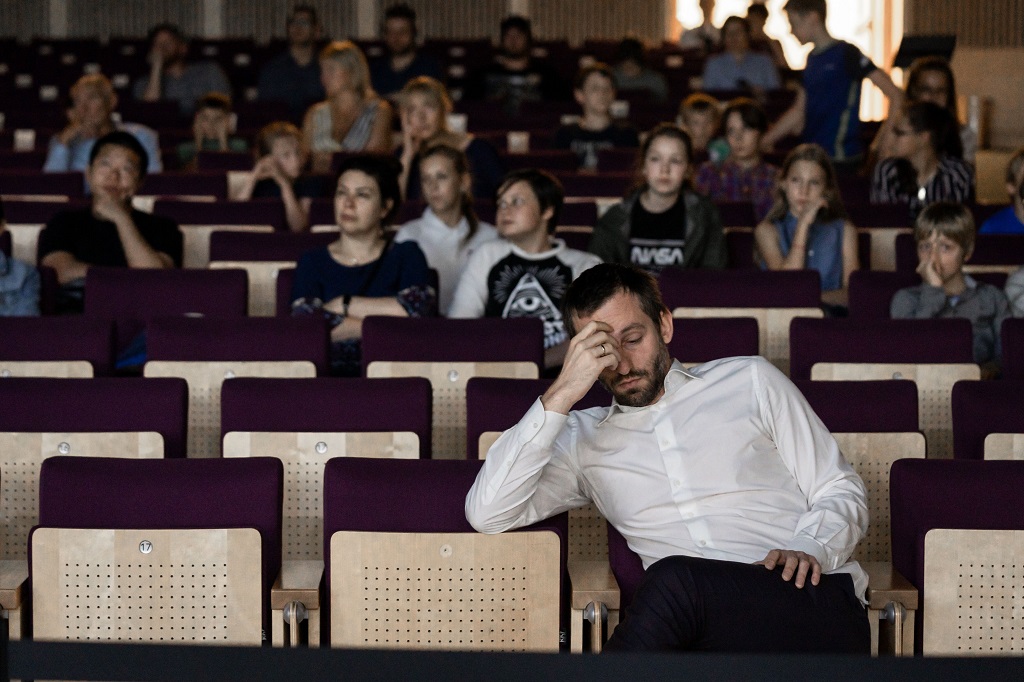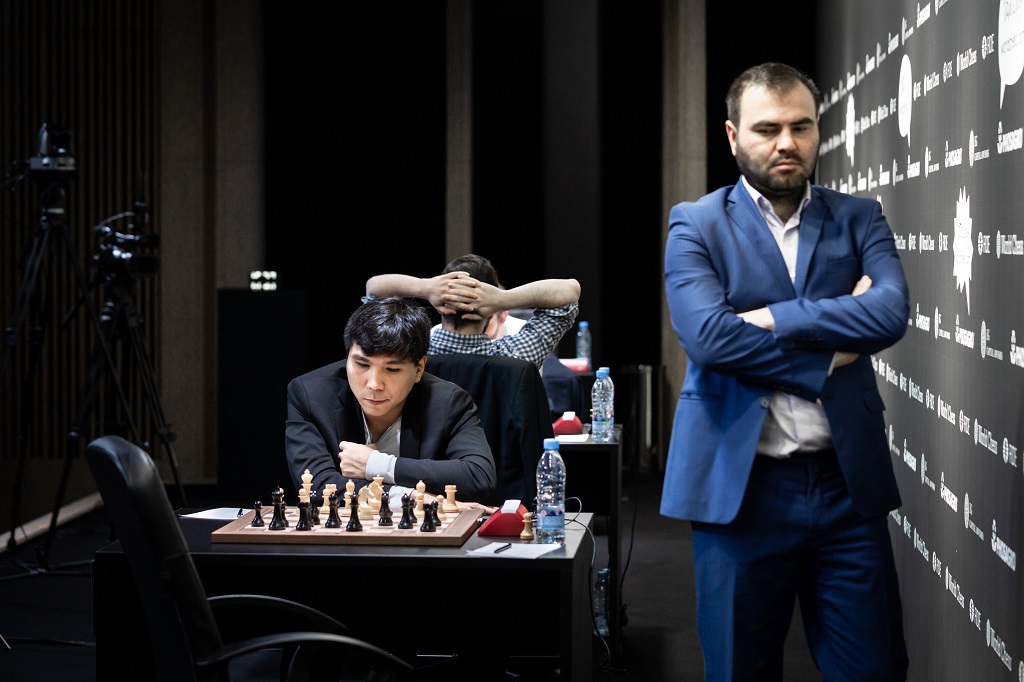


Winning starts with what you know
The new version 18 offers completely new possibilities for chess training and analysis: playing style analysis, search for strategic themes, access to 6 billion Lichess games, player preparation by matching Lichess games, download Chess.com games with built-in API, built-in cloud engine and much more.
Hungarian legend Pal Benko turned 91 on Monday, and we can call Maxime Vachier-Lagrave's exemplary handling of the gambit that is named after him — the Benko Gambit — a belated honorary gift. The Frenchman took down Alexander Grischuk with the black pieces after their first encounter had finished in a draw, which means he has reached the final of the Grand Prix in Riga without needing tiebreaks even once (he also won rounds one and two in the classical stage).
Meanwhile, Wesley So was in a must-win situation against Shakhriyar Mamedyarov. The American did not choose an over-the-top risky strategy, which meant his opponent was in position to simplify into a balanced queen endgame. So kept on trying but could not prevent Mamedyarov from finding a threefold repetition, which secured him match victory and a spot in the final.
Click or tap any result to open the game via Live.ChessBase.com
The final match-up kicks off Monday, July 22nd, as Sunday is the only scheduled rest day in Riga and there was no need for tiebreaks on Saturday.

"What is going on?!" | Photo: World Chess
The game started 1.d4 ♞f6 2.c4 g6 and Alexander Grischuk escaped his rival's Grünfeld with drastic measures — 3.h4, a move previously played by the likes of Anton Korobov and Richard Rapport. Maxime Vachier-Lagrave thought long and hard before responding with 3...c5. There followed 4.d5 b5 5.cxb5 a6 and the players were exploring Benko Gambit territory, but with the h-pawn already committed on the fourth rank.
As usual, the computers assessed White's position favourably, with his central space and the extra pawn two highly valued commodities by the engines. By move 15, the players reached the following complex position:
Master Class Vol.2: Mihail Tal
On this DVD Dorian Rogozenco, Mihail Marin, Oliver Reeh and Karsten Müller present the 8. World Chess Champion in video lessons: his openings, his understanding of chess strategy, his artful endgame play, and finally his immortal combinations.
Grischuk was not happy with his 15.♖e1, but at the same time he thought he had some chances, as at this point he rejected his opponent's draw offer.
Vachier-Lagrave continued to create threats on the queenside and showcased his great calculation abilities in the following lengthy sequence:
Feel free to try your own variations on the diagram above
There followed 20...♞bd3 21.f4 ♛b4 22.♘b1 c3 23.fxe5 ♞b2 (a move missed by Grischuk) 24.♕c2 cxd2 25.♕xb2 ♛xe4 26.♕xd2 ♜c2 (the rook joins the fray) 27.♕d3 ♜xe2 28.♕xe4 ♜xe4 and the players reached an endgame in which White was still a pawn up, although Black had better piece coordination.
The Frenchman handled the position masterfully, and by the time he played 42...g5 it was clear that only a miracle would save his Russian opponent:
The rook on a3 is completely out of play, while the knight is the only piece preventing Black from capturing on f2 with decisive effect — therefore, Grischuk had to play the ugly 43.♖f1. The game lasted five more moves, when the black rooks doubled on the second rank.
Grischuk's assessment of the game could not have been clearer:
I think it was a fantastic game by Maxime. [...] At least to me it seems that he played extremely precisely. I mean, I just need one move and I will be totally fine, but I never got the time to make it.
Attacking with the Benko Gambit
Don't give 1.d4 players an easy ride — sacrifice a pawn with 3.b5 for a lasting initiative. GM Ramirez shows you clear ideas for play in every variation.

Alexander Grischuk needed a change of perspective | Photo: Niki Riga / World Chess
Meanwhile, in the other semi-final, Wesley So was looking for ways to create holes in the Queen's Gambit Accepted structure put forth by Shakhriyar Mamedyarov. The Azeri grandmaster never fell prey to the temptation of leaving aside his solid strategy — in fact, the pawn structure only lost its symmetry when there was not enough material left on the board for White to stir up trouble:
After 25.♗xd5 exd5, White cannot capture the central pawn due to the mate on the back rank. The American pushed 26.h4 but Black kept things completely under control with 26...♛c5.
So tried to make something out of nothing until move 38, when there was no way to prevent Black's perpetual checks. Much like Grischuk, he decorously accepted his defeat:
It's hard to come back after losing the first game, and Shak played very well and I think he completely deserved to win the match. All the best in the finals.
Queen's Gambit Accepted Powerbook 2019
How do you play the Queen's Gambit Acceptedt? Does White have promising variations or can Black construct a water-tight repertoire? The Powerbook provides the answers based on 195 000 games, most of them played by engines.

Wesley So thought Shakhriyar Mamedyarov deservedly defeated him in their match-up | Photo: Niki Riga / World Chess
The Vienna Variation - a reliable and ambitious weapon against 1.d4
The Vienna Variation is a particular and independent system of the Queen's Gambit. It arises after 1.d4 d5 2.c4 e6 3.Nf3 Nf6 4.Nc3 dxc4, when Black's capture on move 4 is strongly reminiscent of the Queen's Gambit Accepted.
Commentary by GMs Evgeny Miroshnichenko and Arturs Neikans